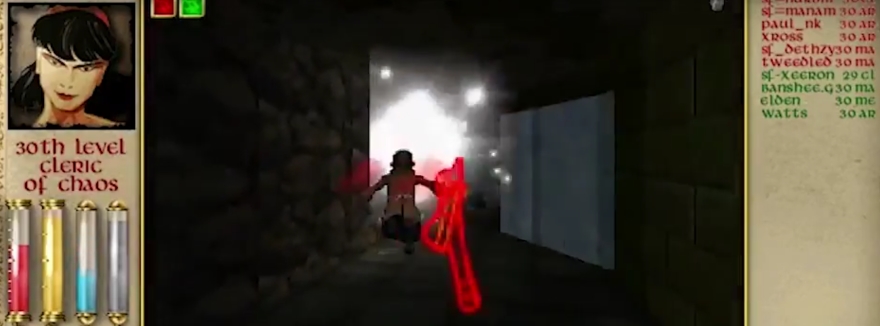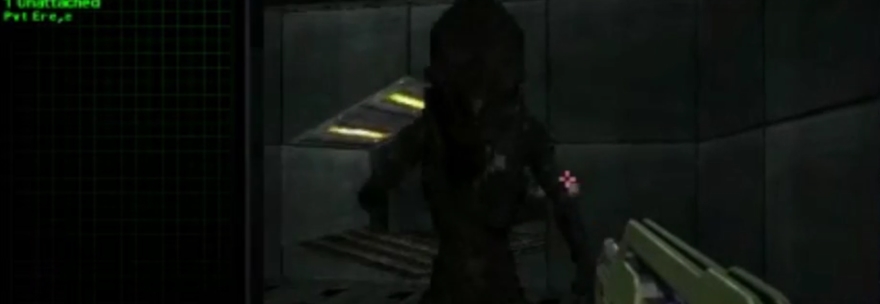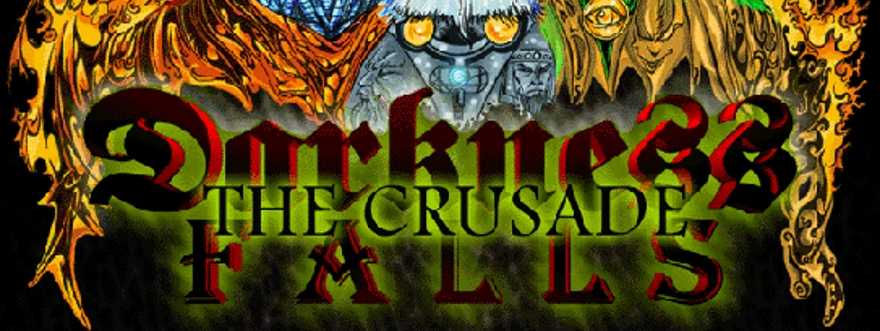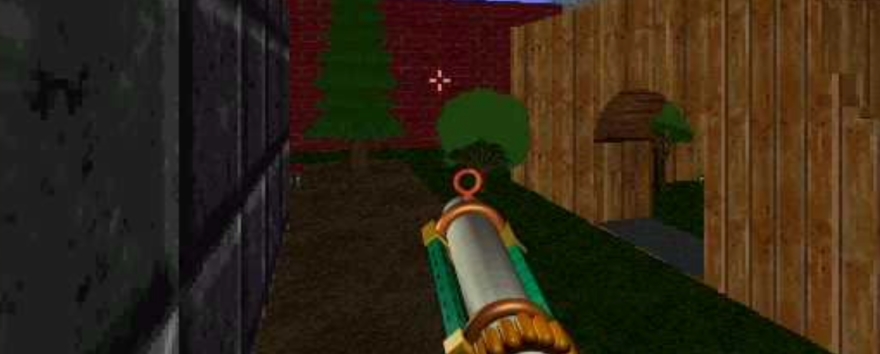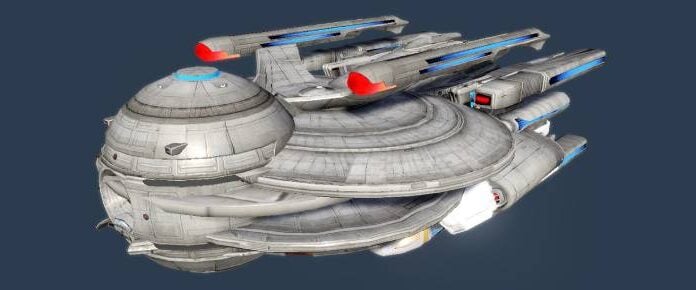
We’re back with our second part of an interview retrospective of Mythic Entertainment’s early online games with CSE’s Mark Jacobs. Last week, we talked about the formation of Mythic, its roster of titles during the 1990s, and how titles like Aliens Online and Silent Death Online helped to push the studio toward its full-fledged development in the MMORPG genre.
Today, Jacobs will take us through a discussion of the challenges awaiting studios trying to make online games in that early era, the communities that formed around Mythic’s titles, and how one MUD called Darkness Falls would be the catalyst that set off Dark Age of Camelot.
The Game Archaeologist: Magestorm and Spellbinder were some other titles that fascinated me. They looked much like proto-MMOs in some way, with PvP, persistence, and in the latter, a 3-D world. Was your team thinking about MMOs when they made those, kind of like trial runs, or were they just iterative design?
Mark Jacobs: Yep, we sure were. Rob Denton and I had both created MUDs. I created Aradath and then Dragon’s Gate, he created Tempest. So both of us were really into the idea and execution of MMOs.
Magestorm was a FPS using our Raze engine but with character persistence and matches that, if I remember correctly, could take up to an hour to complete. The level design was fantastic (I did not create any of the levels) and the Rolemaster table-top game was the perfect system for the game. We could also support at least 2X the number of players online that other multiplayer online games could at the time. The bottom line is that what made it so memorable was, in the end, just that it was a lot of fun to play and it ran really well for that type of game.
And if a game isn’t fun, what do you have, really?
You are right, fun matters more than anything else and that was proved by the early online games.
Which of Mythic’s earlier games saw the strongest communities form around them?
Magestorm had a great community, as did Darkness Falls and Silent Death. It’s hard to say which community was stronger, but I can say that some games certainly had a weaker community that we would have liked to see, but that wasn’t the players fault, it was ours as the developer. If Aliens Online had made it up to AOL, I think it would have blown through those numbers and the community but it never did.
Wikipedia lists Ultima Online as one of the titles that Mythic worked on. Did someone goof here or was there some collaboration?
We worked on it after the EA acquisition. EA turned it over to us and said we could shut it down if we wanted because it wasn’t making money. We did a “deep dive” (EA parlance to due diligence) and we found that it was making money, but certain studios at EA were using UO’s revenue stream to help their internal numbers. Once I cleared that away, UO’s numbers looked quite good to EA, so we kept it going.
I want to hear more about how these ’90s games led into Dark Age of Camelot and beyond. Which of these titles had a significant impact in shaping Mythic up to be an MMORPG studio and what key lessons did you learn from their execution?
First, let me say that even before Dark Age of Camelot was created, we had tried to get funding to do other MMOs. Before EverQuest launched, we went down to Kesmai Studios to try to convince them to let us take their Islands/Dungeons of Kesmai series and build a 3-D graphical version of them using our Raze (it was a ray-casting engine) engine. In one of the few bad decisions they made, they turned us down. It’s something I know they regretted, because we’re still friends and they told me so :)
We also tried to get funding for a sci-fi MMO called Into Eternity (I think) but made no headway. However, due to our years of experience working with/for Kesmai, we had built up a nice codebase that was quite efficient in terms of bandwidth usage (thanks to the team’s engineering efforts and Kesmai paying us a bonus for every bit of bandwidth we could save) and a good client/server model. We combined that codebase with Rob’s Tempest and Mythic’s Darkness Falls codebase, and we then had a great jumping off point for Dark Age of Camelot. All we needed was the impetus and the financing. EA provided us the impetus (we were on our last legs) thanks to the EA Games Channel underperforming including Silent Death Online, and my ability to convince Abandon Entertainment/William Lauder/Gary Lauder/Gary Fuhrman to invest in Mythic to create Dark Age of Camelot.
It’s interesting to hear that Kesmai was involved with Mythic, considering how much of an influencing factor they were in other early online games.
Kesmai, as I’ve said many times, was one of the most important companies in the history of online games. They do not get near enough credit for the amazing work that they did back in the earliest days of online gaming. They were as important to online games as Blizzard is to PC general/MMOs in specific or even ID to shooters.
What about Darkness Falls? It seems as thought that was a mascot of the company (considering its namesake was reprised in DAoC) and a template of sorts for DAoC, if I understand it correctly.
Darkness Falls was a very important game for all the reasons you laid out. First, it was a great MUD and secondly, without its codebase, I doubt we would have been able to create Dark Age of Camelot in 18 months. Having the codebase we had, plus a very hard-working and talented team is what allowed us to do that.
One thing I’m noticing about several of these early games was a move to three-sided PvP instead of just two factions. I’m always curious why more studios didn’t latch on to three-sided PvP as the most sensible way to set online conflict up without creating the potential for lopsided battles.
The three-sided idea was also thanks to Kesmai. Way back pre-Dark Age, I had asked John Taylor (one of the founders of Kesmai and a close friend), why they chose three sides. When he explained his rationale, it made perfect sense to me. So, when it came time to create Dark Age, I remember the conversation and decided that Dark Age was going to be a three-sided game, and not a two-sided game like most other games. As to why more studios didn’t latch on to it, I have no idea.
I’m guessing you weren’t contacted to do another Independence Day game for the sequel this past year, considering that Mythic did Independence Day Online? That seems like an oversight!
As to Independence Day, nah, I love Dean Devlin, he’s a really smart and great guy but Independence Day Online was the worst online game Mythic made, at least while I was running the company. I don’t think Fox would have been interested. OTOH, Dean and I stayed friends (despite that game), and we co-operated the Mythic Gaming Center for many years afterward.
What features in these older games would modern MMO players look at and recognize as precursors to massive online gaming?
This is one of the best questions I’ve been asked regarding the “good old days” of gaming. This is a really tough question because I need to think back more than 30 years to get it right. Let’s see if I can do a Great Eight list.
- MUDs, in general: There are way too many features of MUDs that are at the core of what our MMORPGs are today for this list. So, instead of showing them as separate items, and making this a Top One Hundred, I’m grouping them here. But know that there were so many things that were in the MUDs that predated Meridian 59, that you could do an entire article about them. Without the trailblazing work done with the Colossal Cave/Zork and then their offspring, MUDs, we would not be where we are today.
- Three-sided RvR: As per above, this came from the brilliant guys at Kesmai and their Air Warrior game. More than so many other things from that time, this concept was important in many multiplayer games’ history, including of course, Dark Age of Camelot, and will continue to be so going forward. Air Warrior was also the first commercial, online, multiplayer flight simulator and it paved the way for others of the same type, as well as truly proving that the concept that you could have way more than an ascii game online was not a myth.
- Scoreboards: Early online games were big on scoreboards. Whether it was Kesmai’s games, my games, etc., scoreboards and bragging rights were a big thing way, way back in the day.
- Gold Selling/RMT: For better or worse, the first instance of gold selling/RMT came from a MUD that pre-dated Meridian 59.
- The PvP On/Off switch: This one actually came from my second MUD, Dragon’s Gate and it became of part of so many other MUDs and of course, some early MMORPGs as well.
- Campaigns: The concept of campaigns, which is even being used by the upcoming MMORPG Crowfall, dates back to the earliest days of online games, and includes games by Kesmai, and my own Galaxy game which different campaigns could have different settings for things like travel time, production time, etc.
- Multiplayer VoIP: Kesmai, way back during its glory day, was pushing the envelope with this tech. And let me tell you, in the days of expensive bandwidth, this was not an obvious win for them.
- Scripting languages in MMOs: Yep, done way before its use in modern games (let alone MMOs) in many early MUDs.
Thanks again to Mark Jacobs for taking time away from Camelot Unchained to recall this period of online game history!
 Believe it or not, MMOs did exist prior to World of Warcraft! Every two weeks, The Game Archaeologist looks back at classic online games and their history to learn a thing or two about where the industry came from… and where it might be heading.
Believe it or not, MMOs did exist prior to World of Warcraft! Every two weeks, The Game Archaeologist looks back at classic online games and their history to learn a thing or two about where the industry came from… and where it might be heading.
